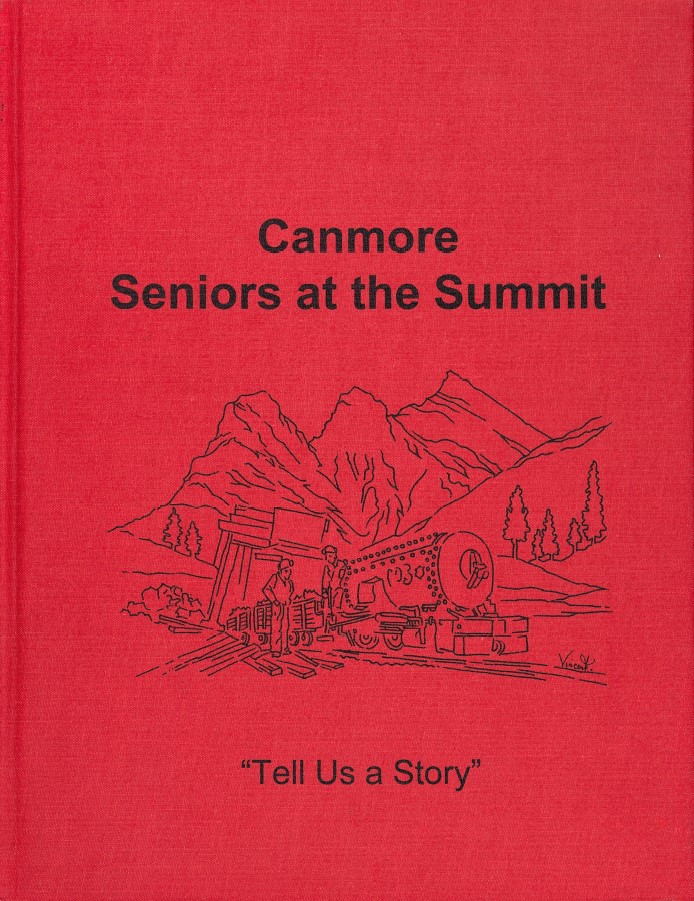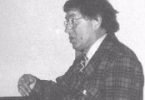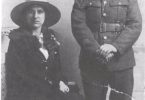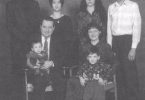As an addict of the “Sport of Kings”, I went to the Palace Theatre in Calgary to see “The Story of Seabiscuit”, a film about a famous thoroughbred. The marquee billing ignored the famous child star Shirley Temple and veteran actor Barry Fitzgerald, the old priest from “Going My Way”. Instead, it was Sugarfoot Anderson’s name which was featured on the marquee; “SUGARFOOT ANDERSON in The story of Seabiscuit”, it read. Eventually a tallish, slim black man, a porter on a railroad station, carried Shirley Temple’s bags from the train to a waiting car. At his single brief and lineless appearance, the crowded theatre erupted into a spontaneous standing ovation. I sat through a second showing, and the same thing happened.
I finally had the pleasure of meeting Mr. Anderson at a dinner a few years ago to mark the Calgary Stampeders’ Fiftieth year.
We had spent the night in the Soo lock-up after not making it across the border the day before. A police cruiser dropped us off at the Algoma Central Railroad marshalling yards. “Take any open boxcar moving, change trains at Long Lac and Nakina” was the advice we followed and we were on the only way west now available to us.
I had left the university residence in Quebec five days earlier, hitch-hiking, going wherever the rides took me, with the beckoning west as the goal. One car I had thumbed on my zigzag course turned out to be a Niagara Falls cruiser and I discovered that my self-declared vagrancy was worth a night’s shelter in the police station tank. They even threw in a ride out of town the next morning to get me started on the next leg.
I hooked up with Mac in Midland. He said he was from the Christian Island reservation but with his reddish, curly hair he didn’t look anything like my vision of an Indian, a vision gained from the limited experience of cowboy movies. Nor did his name, MacDonald, jibe with the image-conjuring Crazy Horse and Sitting Bull. He was sold on the spot on the idea of going west, and we lucked into the rumble seat of a 1932 Studebaker which had brought us to Sault Ste. Marie.
Hearst, Hornepayne and Long Lac came and went, one boxcar after another, but at Nakina we got stuck jumping on the platform of an ore car on the fly, and hung on, literally, to Sioux Lookout. Canada, north of Superior, was spectacular but not to be fully appreciated on this trip. To close our eyes and perhaps doze off, lulled by the sway and lullaby of the wheels on the track just below us, would likely have been fatal. Cold, hunger, exhaustion and eyes full of cinders forced us to abandon our shaky perches and we occupied the two benches in what passed for a waiting room and slept like the innocents we were.
A priest woke us and, after satisfying himself that we were about as sorry as we must have looked, asked us whether we could ride a couple of horses. The question was clearly connected to our need to eat, so the answer was automatic. My experience with horses had been limited to those which pulled wagons, but I assumed, again based on my Hollywood-inspired image, that Mac must be a horse-riding expert. It turned out that he had never been on a horse in his life but by the time I found this out, we were committed, in a barn with two horses, saddles and bridles and instructions to saddle-up and take them out for a gallop across the snow-covered countryside.
From what followed was born in me a long association with, and affection for, horses, which dramatically altered the course of my life.
But that’s another story…
I have an old friend who, on the rare occasions we see each other now, still calls me “Davey Boy”. When he does, it takes me back more than fifty years to the Farr Loft Boxing Club in Calgary, alive with the sounds and smells of leather thwacking leather and sweaty, young-muscled flesh, the blended rhythms of skipping ropes and speed bags, mingling with the forced breath and softshoe of the shadow boxer. Me getting ready to spar a usual couple of rounds with each of “Irish” Jimmy Nolan, and Eddie “Bolo” Hallaghan. Nolan, a local, and Hallaghan from California, were prepared to battle for a trumped up Western North American Middleweight Championship. I had been promised fifty bucks for a six-rounder on the undercard and sparring with the two headliners was part of the deal, but a stone-fisted shot between the eyes scrambled my vision. With optic nerves astray, “Davey Boy” lost his spot on the programme. And a payday!
Sharon Gail will turn fifty-two this year. Hard to believe that it is more than half a century since I walked into the Employment Office looking for a job on a ranch. As it turned out, I wound up in a Model A Ford on the way out to a small mixed farm.
Jack was in his fiftieth year and his wife, a dozen years his junior, had been married less than a year. He had been working his own land only a few years, a hired man most of his life, knew what it was to work just for food in the Great Depression, and she had been his housekeeper. I had hired on to help with the harvest and other chores.
Most of it was new to me; the combine was a Massey-Harris, built in 1927, before the days of self-propelled models. The lone tractor was needed to pull the combine, the wagon into which the grain hopper was emptied was horse-drawn. In addition to the long hours driving alternately the tractor or the team of horses, there was a small beef herd to be attended, two cows to milk for farm consumption, and the usual collection of pigs and chickens.
One evening, we returned from the field to find Jack’s wife in labour; they left for the city crammed tight into their Model A.
I was still alone next morning, did the necessary chores, and then started to panic. The crank phone was a mystery to me, I didn’t know where to call anyway. Unable to do any more, I mounted one of the horses and rode to the closest farm. A call was made to discover that a healthy daughter had been born to a healthy mother. Jack was the only casualty. In his excitement, he had tripped entering the hospital and had suffered a broken ankle and cracked ribs.
In Canmore Seniors at the Summit, ed. Canmore Seniors Association, 2000, p. 217-218.








